 Louise BELL
Louise BELL
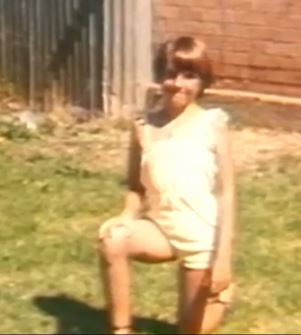
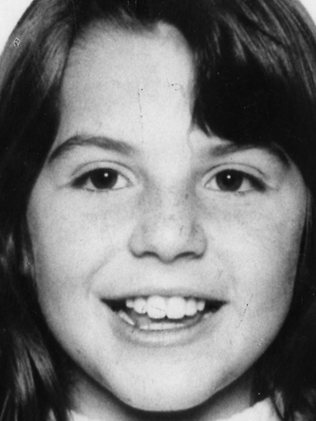
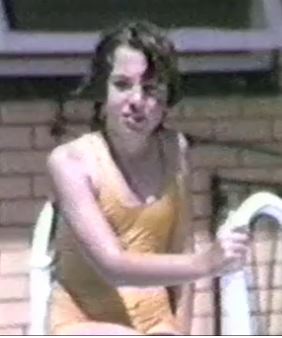
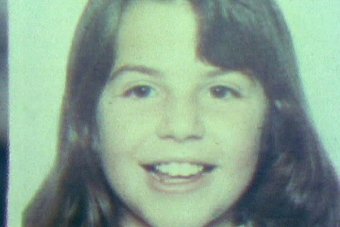
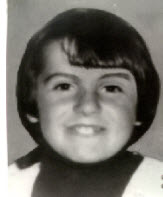
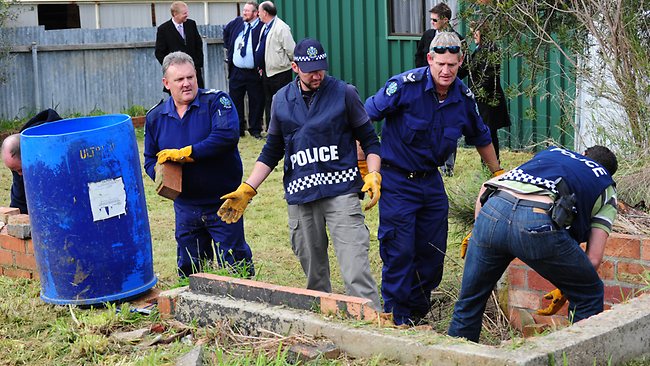
Police search the backyard of a
Hackham West house in hope of finding evidence to solve the 29 year old case of
missing child Louise Bell. Pic Mark Brake
Source: AdelaideNow
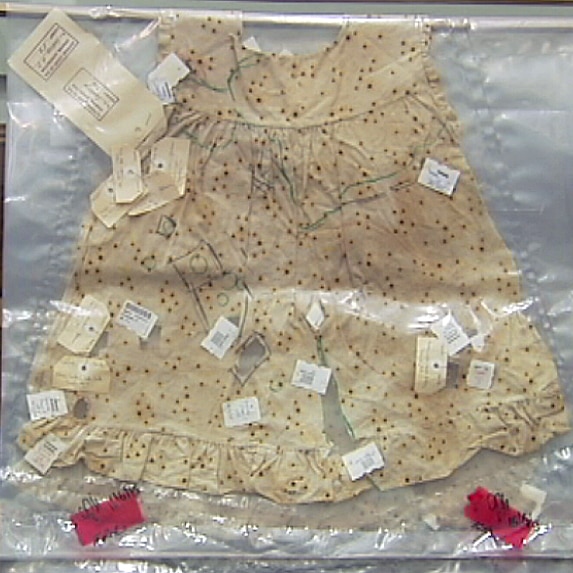
Louise Bell's pyjama top
Rewards up
to the amounts shown will be paid by the Government of South Australia, at the
discretion of the Commissioner of Police, to anyone who provides information
leading to the apprehension and conviction of the person or people responsible
for crimes posted.
REWARD $200,000
Age - 10 years
Last seen - January 3rd, 1983, Hackham West, SA
Family's plea to dying murderer
Article from:

RENATO CASTELLO
May 11, 2008 12:30am
THE sister of an Adelaide woman missing for two decades has pleaded
for vicious child murderer Valmae Beck to bring closure to her family's
ordeal.Queensland police believe the critically ill murderer
and her estranged husband could hold the key to the disappearance of Henley
Beach woman Stella Farrugia and Hackham West schoolgirl Louise Bell.
Beck, who was jailed for life in 1988 over the rape, torture and
murder of a schoolgirl, is on life-support in a Townsville hospital
following heart surgery on Monday.
Townsville's Regional Crime Co-ordinator, Detective Inspector Warren
Webber, has said Beck and Watts may be linked to the disappearances of a
number of young women in the 1980s.
"There is a great deal of interest in Beck because she may hold the
key to solving a number of unsolved crimes," he said.
"We can only hope she has an epiphany on her deathbed and comes
clean."
Police had put the morbidly obese Beck on suicide watch after
interrogating her about possible links into the disappearance of Ms Farrugia
and Ms Bell.
Ms Farrugia's sister, Christine Lilkendey, 47, pleaded with Beck, 64,
to tell police anything she knew about the fate of her "gorgeous" sister.
"She must tell us if she knows anything, I want to know if Stella is
alive," she said from her Melbourne home.
"At least if there was a body, a cemetery to go to, we can mourn. But
there is no closure, no end, if the body is not there."
Ms Farrugia was 18 when she was reported missing from her Seaview Rd
apartment on October 18, 1984, leaving behind her belongings, bank notes and
her beloved dog.
Louise Bell
was 10 when she was reported missing from her Hackham West home on January 5, 1983.
Police believe the girls fit the description of the "pretty little
virgins" Beck and husband Barrie Watts stalked during the 1980s. The pair
were jailed in 1988 for the abduction, rape, torture and murder of Noosa
schoolgirl Sian Kingi.
http://www.onlineopinion.com.au/view.asp?article=3700
A week after 10-year-old Louise Bell was snatched from her Hackham West home
on January 3, 1983, by an intruder who is believed to have cut through a window
flyscreen, $5000 was put up for information.
A week later, the state government increased that by $10,000. About the same
time, a group of Adelaide business leaders put forward up to $15,000 of their
own money as added incentive.
More than 21 years later, the case remains open.
"After the disappearance of 10-year-old South Australian schoolgirl,
Louise Bell, from her parents' home in the Adelaide suburb of Hackham West
in January 1983, concerned parents demanded immediate action from the South
Australian police.
A South Australian prisoner, Raymond John Geesing, was serving time in
Adelaide Jail for an unrelated crime when he was charged with the abduction and
murder of Louise Bell. The Crown case rested largely on evidence from four
prisoner informants who had been in prison with Geesing and alleged he had
confessed to them. Based on their evidence, Geesing was convicted and sentenced
to life imprisonment.
On April 12, 1985, the South Australian Court of Criminal Appeal unanimously
upheld an appeal by Geesing. South Australian Chief Justice, Mr Len King, ruled
that Geesing's 1983 trial had miscarried and the guilty verdict for the murder
and abduction of Louise Bell was set aside. Chief Justice King said the prisoner
informants were unreliable and untrustworthy witnesses.
One prisoner retracted his original statement. The evidence of another
prisoner informant was declared inadmissible. The Court of Criminal Appeal
ordered there be no retrial and Geesing walked to freedom after serving 17
months for a crime he had not committed. " - Information source, Bernie
Matthews, Online Opinion writer -
Murderer takes her secrets to the grave
THE notorious child killer Valmae Faye Beck, formerly known as Fay Cramb,
has died in hospital, Queensland's Acting Police Minister, Robert Schwarten,
said yesterday.
Beck was admitted to a Townsville hospital earlier this month suffering
difficulty in breathing and chest pains.
She was placed in a medically induced coma following complications with
heart surgery.
Beck and her former husband Barrie Watts were jailed for life in 1987 for
the torture and murder of a Noosa schoolgirl, Sian Kingi.
Detectives, seeking deathbed confessions, were hoping to interview the
64-year-old high-security prisoner over more unsolved crimes.
Detectives believed the notorious criminal may have known the fate of
several unsolved cases involving young girls and women across Australia,
including the death of Helen Mary Feeney, a 31-year-old student, between October
29 and December 1, 1987.
Beck gave evidence that Watts had dumped Ms Feeney's body and burnt it at
a rubbish tip near Lowood, west of Brisbane.
Watts was acquitted of the murder, but police believe Beck knew exactly
where Ms Feeney's body was buried.
Today, Mr Schwarten, who is the acting Police Minister while Judy Spence
is overseas, confirmed Beck had died in Townsville General Hospital without
having regained consciousness.
"She got a life sentence and it turned out to be that," Mr Schwarten said.
"Right until the end, she was of no assistance to police. Harsh as it may
sound, and people may judge me on that, I don't think there will be many
Queenslanders who would shed a tear in her direction and there would be some who
would cheer."
Beck and Watts moved from Western Australia to Queensland when they
embarked on an eight-week crime rampage that ended with the abduction, torture,
rape and murder of Sian. "There are a number of other unsolved cases that
involve similarities to the well-planned killing of Sian," a police source said.
Queensland's Police Commissioner, Bob Atkinson, is expected to give a
statement this week on Beck's death.
AAP
Cops hope killer Valmae Faye Beck will confess to
more
By Nadine McGrath
May 17, 2008 11:50am
Article from: AAP
THE condition of convicted child killer Valmae Faye Beck, formerly known
as Fay Cramb, has improved and it is believed she is out of a coma.
The Department of Corrective services said Beck was now in a stable
condition in the Townsville General Hospital.
Beck was in a medically induced coma following complications with heart
surgery.
It is believed she is out of the coma but still not speaking.
Beck and her former husband Barrie Watts were jailed for life in 1987 for
the torture and murder of Noosa schoolgirl Sian Kingi.
Cold case detectives want to interview the 64-year-old high security
prisoner over more unsolved crimes, hoping for confessions as she faces her own
mortality.
Detectives believe the notorious criminal may know the fate of several
unsolved cases involving young girls and women across Australia.
In August 1995 a Supreme Court jury in Brisbane acquitted Watts of murder
and a lesser charge of manslaughter in relation to the death of a woman whose
body has never been found.
Watts pleaded not guilty to murdering Helen Mary Feeney, a 31-year-old
student, between October 29 and December 1, 1987.
Beck testified that Watts had dumped Ms Feeney's body and burned it at a
rubbish tip near Lowood, west of Brisbane.
But detectives believe the body was actually disposed of elsewhere and
Beck knows the location.
Beck has been questioned about the disappearance of 14-year-old Sophie
Helen Woodman, who went missing on March 21, 1980, after leaving her Perth home
with a girlfriend and travelling to the eastern states.
She and Watts have been linked to the murders of Sharron Phillips, 20, in
Brisbane's outer west, Stella Mary Farrugia, 19, and
Louise Bell, 10, in Adelaide.
Treatment of morbidly obese Beck sparked a public outcry with Premier Anna
Bligh forced to defend her rights to taxpayer-funded health care.
"While I understand that people might have some questions about this, in
this country we don't have a death penalty - we do provide medical services to
people who are in our prisons,'' Ms Bligh told reporters in Brisbane.
Two prison officers have been posted at Beck's hospital bedside with
concern she may be a target for reprisals rather than posing any threat given
her medical condition.
80s murder suspect jailed for child sex crimes
Posted 17
minutes ago - January 29th 2010 - ABC
A man once convicted of killing Adelaide girl Louise Bell
has been sent to jail for at least five years for child sex crimes.
The District Court heard Raymond John Bolte, previously known as Raymond
John Geesing, was convicted of the murder of 10-year-old Hackham West schoolgirl
Louise Bell in the 1980s.
That was quashed on appeal.
Bolte, now 62, pleaded not guilty to the current sex charges against two
young girls, but was convicted by a jury.
Judge Paul Rice has sentenced him to seven years' jail with a non-parole
term of five years, back-dated to when he was taken into custody in September.
The judge said Bolte may do it hard in prison because other inmates may
think he was involved in the unsolved murder.
The victims say they think Bolte will remain at risk of re-offending after
he is released.
But Bolte's wife says he is innocent and the convictions are based on
lies.
DNA tested as 1983 murder case reopened
Updated
October 10, 2011 10:54:48 - ABC
Police hope new forensic testing techniques might help solve
one of South Australia's high-profile murder mysteries.
Advances in technology have triggered a reopening of the 1983 abduction
case of Louise Bell.
The 10-year-old girl was taken from the bedroom at her Hackham West home
in Adelaide in January 1983.
No body has never been found, but police are convinced she was murdered.
A Port Lincoln prison inmate has been questioned and is having his DNA
tested.
The man, who cannot be identified publicly, is believed to be serving a
lengthy sentence for child sex offences.
Police say the testing will need to be further refined, before any
conclusions can be drawn.
Detective Acting Superintendent Denise Gray of SA Police says authorities
do not want to give the girl's family false hope.
"While current forensic testing initially appears positive or encouraging,
I don't want to raise the hopes of Louise's family unnecessarily," she said.
Police will not say if the suspect owned a nearby house which was searched
intensively back in 1991.
But they have ruled out Raymond John Bolte, previously known as Raymond
John Geesing, who was convicted of Louise Bell's murder in 1984, but later
released from jail after the conviction was overturned.
Lands Title Office records show Pfennig owned the Holly Rise property from
1977 until he was taken into custody.
The Louise Bell investigation was re-opened last year because of better
DNA technology, police said.
The radar equipment being used at the Hackham West search site has been
loaned from the Australian Federal Police, who are assisting in the operation.
Similar equipment was previously used to search a Salisbury North backyard
in the infamous "bodies in the barrels" murder investigation.
Police say they could be working at the site for several days.
Major Crime officer in charge Superintendent Grant Moyle said the search
had been ordered after police re-examined evidence from the 1983 investigation
and subsequent investigations in the late 1980s and early 1990s.
"We are searching for any evidence that might relate to Louise Bell or
any other offences that might have been committed," he said.
"It's a big commitment. We have examined closely the extent of
investigations that were conducted in 1983, when Louise Bell went missing. It is
a result of that, that we felt for thoroughness we needed to fully examine the
backyard more than they did in 1991."
In the mid-1990s, Louise's father, Colin Bell, said his daughter's
disappearance was "completely out of character''.
"She was a fairly timid girl and slightly immature for her age and fairly
shy,'' he said.
House searched over 10yo's cold case abduction
By Robyn Powell - ABC
Updated
July 03, 2012 08:08:56
Adelaide police are searching the backyard of a property in
the southern suburbs over the unsolved abduction and presumed murder of a
10-year-old girl in 1983.
Major Crime squad detectives and forensic experts are searching a house in
Holly Rise at Hackham West.
Louise Bell was abducted from the bedroom of her home at Hackham West and
police believe she was murdered.
A body has never been found.
The case was reopened last year to make use of new forensic technology.
Police have called on Australian Federal Police and their
ground-penetrating radars to search the Hackham West property, which they said
was once owned by a key suspect.
Dieter Pfennig lived there until he was taken into custody for the murder
of a Murray Bridge boy in 1989.
He is serving a life sentence in Port Lincoln jail.
Detective Superintendent Grant Moyle, who heads Major Crime, said the
backyard had been dug up back in 1991 but he hoped the new technology would
uncover fresh evidence.
"In 1991 they used an excavator just to dig along the layers of the ground
and expose it. Now we're able to use the radar to pinpoint certain areas of the
ground and look for abnormalities in the ground structure as I understand it.
That'll give us some indications of disturbed ground so we can excavate set
areas," he said.
But he said he did not want to give the Bell family false hope.
"While current forensic testing initially appears encouraging, I don't
want to raise the hopes of Louise's family unnecessarily," he said.
Police expected their search to take at least the next three days and the
current residents of the property have been moved out during that time.
A man was convicted of Louise Bell's murder in 1984, but later released
from jail after the conviction was overturned.
POLICE are edging towards a potential breakthrough in one of
South Australia's highest-profile suspected murder mysteries.
The abduction in 1983 of 10-year-old schoolgirl Louise Bell from her
bedroom in suburban Adelaide has haunted the community and investigators for
almost 30 years.
The body of the schoolgirl was never found, but police remain
convinced she was murdered and yesterday vowed they "won't give up" trying
the solve the case.
Detectives hope advances in forensic testing techniques will help
solve the mystery and yesterday began work with the Australian Federal
Police on a three-day search of a property at Hackham West in Adelaide's
outer southern suburbs.
The head of the Major Crime Branch, Detective Superintendent Grant
Moyle, said "current forensic testing initially appears encouraging".
He stressed police did not want to raise the hopes of the Bell family.
"One of our objectives is to try to find Louise and return her to her
parents, who have been devastated for the past 29 years over this matter."
The property being searched was reportedly once occupied by convicted
child murderer Dieter Pfennig. Mr Moyle would only say the person of
interest linked to the property was in custody.
Pedophile Raymond John Geesing was convicted of the crime, despite no
body being found, but later acquitted on appeal. Pfennig was jailed for life
in 1992 for the murder of 10-year-old Murray Bridge schoolboy Michael Black.
Louise Bell
investigation
Friday, 6 July 2012 5:18pm - South Australia Police
Major Crime have today concluded their search for Louise Bell at 31
Holly Rise Hackham West. Items have been taken from the property for
further analysis, but no human remains were located.
Since the commencement of the search, there has been a further 15
calls to Crime Stoppers and each of those calls will be followed up in due
course by investigators.
Louise's disappearance has been the subject of a full investigational
review since August 2011.
Major Crime remain satisfied with the progress of this review and
maintain a resolve to locate her and to charge the person responsible for
her disappearance.
Louise's family have been kept informed of the progress of the
investigation and in particular, have been advised of the results of this
search.
While they are naturally disappointed that Louise has not been
located, they remain hopeful that she will be and are eager for the police
to continue with the investigation.



